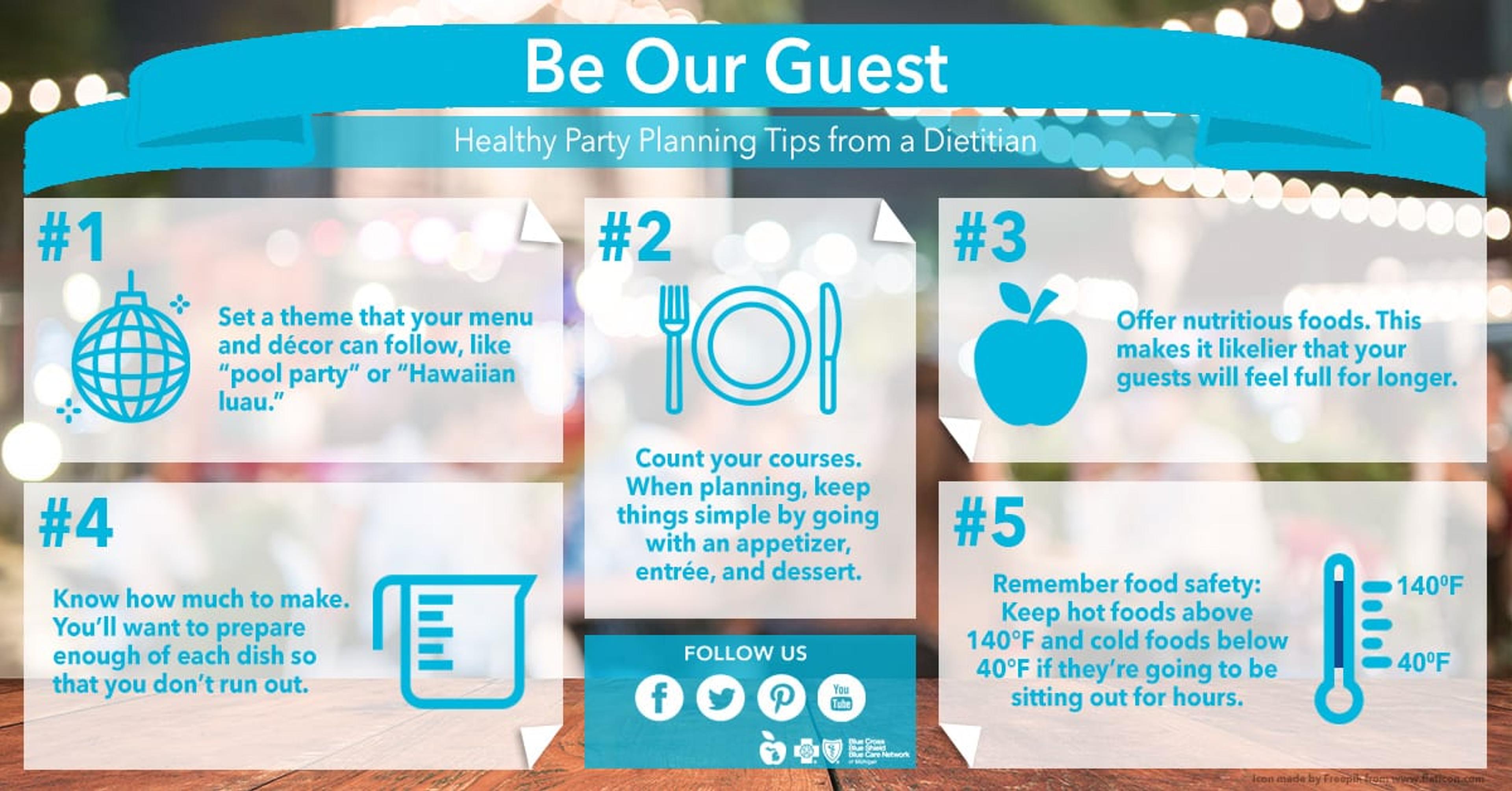Be Our Guest: 5 Healthy Party Planning Tips from a Dietitian

Lucy Ciaramitaro
| 3 min read

When it comes to party planning, there’s nothing worse than thinking you have enough food for your guests and unexpectedly facing the “pizza panic.” So what’s the trick to avoid this?
We reached out to our good friend Grace Derocha, registered dietitian and health coach at Blue Cross Blue Shield of Michigan, to find an answer.
First and foremost, it’s important to note the rules of feeding guests can vary based on the following:
- How long is your party going to be?

- Will guests potentially eat more than once?
- Do your guests tend to eat more or less than the average serving size?
- Is there a need for kid-friendly dishes?
- Are there any allergy concerns?
- Will any alcohol be consumed?

Tip #1: Identify A Theme
Whether the occasion be a birthday or holiday, think about the purpose of your party. From there, set a tempo or theme that your menu (and décor) can follow, from color to taste. For example, a sports-themed party might feature food or favors that represent team colors. Some other themes to play off include:
- Seasonal theme (i.e. “pool party barbecue”)
- Decade theme (70s, 90s, etc.)
- TV/Movie theme
- Character/superhero theme
- Destination/cultural theme
Tip #2: Count Your Courses
Will you serve a traditional three-course meal, or choose something more complex? Answering this helps determine how much food needs to be prepared and served in each dish. Regardless of the route you take, there are a variety of healthy options for every course. Try some of these at your next gathering:
Appetizer Ideas:
Entrée Ideas:
Dessert Ideas:

Tip #3: Make Sure All Food Groups Are Represented
When the meal provides well-rounded nutrition, it’s more likely that you’ll keep your guests full for longer and offer variety to their plate and palette. Think about the colors of the rainbow and try to incorporate them whether it be with fruits, vegetables, proteins, starches and/or dairy items.
Tip #4: Know How Much to Make
Taking into consideration the questions listed above and how many courses you plan to serve, these numbers may vary. This will help give you a general idea for how much to serve for a typical three to four-hour party:
- Appetizer: Assume each adult guest will have 2-3 servings. One serving is generally about half a cup.
- Vegetables: Assume each adult guest will consume 1-2 cups. If you plan to serve a hot and cold vegetable, assume each person will have one of each.
- Fruits: Assume each adult guest will consume 1-2 cups.
- Meat: Assume each adult guest consume 6-8 oz. of meat.
- Carbs: Assume each adult guest will consume 3-5 cups.
- Dessert: Assume each adult guest will consume 1-2 cups.
Tip #5: Remember Food Safety
Before the party, think about which dishes will be served hot and what food needs to stay cold. If it’s likely that dishes will be sitting out for hours, there may be a need for coolers and/or chafing dishes to avoid bacteria and waste. Remember the temperature danger zone for food is anywhere from 40-140 degrees.
In the case that there are allergies (nuts, shellfish, gluten or lactose intolerance, etc.) or diet restrictions (vegetarian, vegan, etc.), be sure to label each dish and list ingredients where it’s necessary.
If you enjoyed this post, you might also like:
Photo credit: Elena Roussakis via Flickr (modified)





